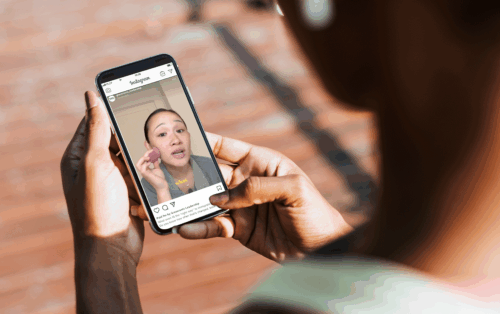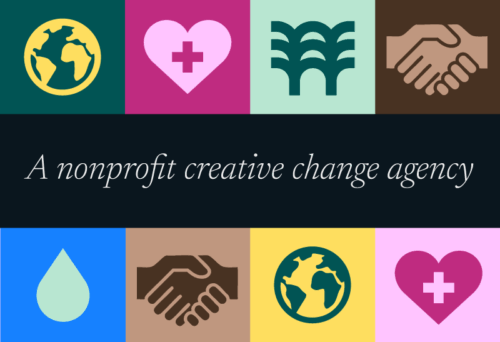
As communications and public relations practitioners, we’ve been keeping a close eye on the rapidly evolving news about the COVID-19 outbreak. To say that this pandemic and healthcare crisis has been disruptive is an understatement. On an operational level, it’s leaving many of us scrambling to reshuffle in-person gatherings, travel plans, childcare arrangements, remote working setups, medical appointments, among a myriad of other things. On a deeper level, it’s surfacing deep inequities about who has paid family leave and sick time, access to internet technologies for remote learning and working, medical vulnerabilities such as compromised immune systems, and many others.
For those of us working in the nonprofit communications space, a crisis like this calls on us to be responsive to a rapidly changing media landscape and identify opportunities to responsibly uplift — or hold off on pushing out — messages and content that advance our work.
We’ve gathered below some suggestions and resources for nonprofit communicators to stay engaged, productive, and impactful in this age of “social distancing.”
Media and public relations tips
- Be human. Remember that the reporter you are pitching is also stressed out — dealing with an even more pressurized 24-hour news cycle, and having to deal with their own family needs at home — and likely not focused on your issue (unless you’re working in the epidemics and public health space). Be thoughtful of their mindset and the deadlines they likely have placed on them at this time. Shoot for long-term relationships over short-term gains.
- Take stock of your pitches. Gather your team to brainstorm and make a list of connections to the coronavirus story and pitches you might make in the coming weeks. Evaluate them based on time sensitivity to separate out the ones that should be made now from the ones that can wait a bit longer. Plan them out and see how things look on your editorial calendars.
- Be mindful of timing and tone. If you are going to connect your issue to COVID-19, be thoughtful. News coverage about the outbreak is still in its height and people will need time for it to fully sink in before they’re ready to look at how it’s impacting other sectors without feeling like it’s too soon. And remember that people have died, and are dying from this pandemic. Tone matters.
- People will cancel — and they’re doing the right thing. We recently commiserated with a partner who had organized a happy hour — well before large group gatherings were being discouraged — for journalists to meet with some key senior staff and experts. The day of the gathering, eight confirmations had dwindled down to one because the journalists had been pulled onto coronavirus stories. And with the growing need to contain the virus’s spread, understand that it’s the right thing to do.
- Stay on the lookout for opportunities. While many news outlets are moving reporters onto the coronavirus beat, there is still a need for content that gives people a break from the nonstop coverage. One of our staff recently pitched an event related to EVs, and the reporter said their team was avidly looking for things that are not virus-related.
- Stay flexible. Remember that decision-makers are focused on other things now too — so if that’s your audience, consider altering your timelines a bit and be flexible.
Tools and resources
- Virtual meetings. As a distributed organization of some 30 staff spread out in 15 cities, Resource Media works in Zoom country. It offers an easy way to share your screen, has a chat function for sharing written notes or links during the meeting, integrates seamlessly with Outlook calendars and Slack (more on this), and works great on computers as well as mobile devices. Its webinar function includes features like polling, a “green room” for practice sessions, and “breakout rooms” for small group discussions. For those of us who are camera shy or don’t have a high-speed internet connection, Zoom meetings include a phone call number so participants can dial-in using audio only. Techsoup offers a good overview and side-by-side comparison with other video conferencing tools.
- Messaging platforms. Resource Media uses Slack to send each other (and external partners who work on fast-moving campaigns with us) direct messages, group chats, and organize our work through dedicated channels. It significantly cuts the volume of email back and forths and allows for real-time collaboration. It includes thoughtful integrations with productivity apps like Google docs and Zoom, so you can quickly move from “Do you have a minute to review this draft?” to “Looks pretty solid! Can we talk through the distribution strategy for a sec?” to “Absolutely. Let’s pop into this Zoom room.” Notification settings can help your colleagues know when you’re unavailable to chat, so you can set the appropriate boundaries you need to make remote work sustainable.
- Shared drives. Collaboration inevitably requires sharing files and documents in the cloud. Services such as Box, Google Drive, Microsoft OneDrive, and Dropbox are some of the options available. For working drafts that require real-time collaboration, Resource Media uses Google Docs (word documents), Sheets (spreadsheets), and Slides (presentation decks), all of which come with the ability to share it with specific users with varying levels of permission (e.g. view only, comment, edit, share with others).
As communicators who have social justice and equity baked into our mission, it behooves us to point out that public health crises like this put an enormous burden on people with disabilities or compromised immune systems, the elderly, undocumented laborers, gig workers, domestic workers, immigrants from impacted countries, and others. Find ways to support them by giving to response funds, join the call for worker protections, and push back against racism and xenophobia.
And please, practice self-care. We’re living through some very scary and stressful times. Find joy where you can (we love waving hi to our colleagues’ families and furry companions who occasionally make appearances on Zoom video calls), stay healthy, and put yourself in the best position to be able to continue helping others.
–By Jenny Park and Jessica Lubetsky
More Insights and Resources


Rooted in who we are: Check out our new look and website

